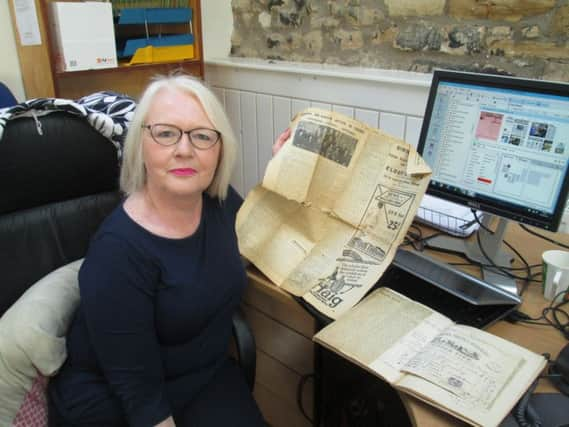As the Fife Herald moves to a new office we look back to a bygone era ...


While we’ll still be playing a significant role in the local community, technological advances mean that, like most other newspapers, we’re streamlining operations – but goodness knows what our forebears would have made of it all.
While spring cleaning in preparation for the move, we unearthed some historic artefacts that offer a fascinating glimpse into the local newspaper industry of days gone by.
Advertisement
Hide AdAdvertisement
Hide AdThe Fife Herald was the first weekly newspaper to be produced in Fife and was later to merge with the Fifeshire Journal, launched 10 years later, to become the Fife Herald and Journal.
The two publications had been rivals until then since they failed to agree politically, chiefly on the question of Irish home rule.
A number of Fifeshire Journal employees were transferred to the Herald, but most had to seek their fortunes farther afield.
Amongst the items we unearthed were cuttings and a scrapbook recounting an event that clearly represented a significant milestone in the annals of the Fife Herald and Journal.
Advertisement
Hide AdAdvertisement
Hide AdThe edition dated Wednesday, March 29, 1933, devotes hundreds of column inches to a reunion held to mark the paper’s centenary.
Nowadays the working day begins with the flick of a computer switch, but back in the late 19th century one poor young apprentice had to be up with the lark in order to kindle the fire ready for the arrival of the rest of the workers.
Known as the ‘printers’ devil’ , he had to clock in at 5am and his tasks included mixing the ink and fetching the type. Needless to say, by the end of the day he was black.
Most of the compositors in the early days were women, who were given the charming nickname ‘Herald Angels’.
Advertisement
Hide AdAdvertisement
Hide AdThe compiler of the scrap book we found remains a mystery, but its contents reveal an intriguing insight into the writing style of the time as well as the printing processes.
A cutting from the Fifeshire Journal of July 19, 1891, gives a fulsome account of a presentation made to James Nairne, the ‘grand old man’ of the printing department.
He was presented with an engraved silver plate and a pair of gold spectacles which, as the receipt from jewellers R. and G.B. Robertson shows, cost a total of two shillings and fourpence (about £2.02 in today’s money).
He also received a ‘substantial remembrance’ in the form of a purse containing £8.10s in gold (about £8.50).
Advertisement
Hide AdAdvertisement
Hide AdPoor Mr Nairne was clearly overwhelmed by the gift, as the article tells us: ‘Ere the kindly ceremony came off, a slight hitch – the only one of the occasion – took place. The guest of the evening was seized simultaneously with shyness and cramp – ‘growing pains’, as someone humorously suggested.
‘Both ailments succumbed to judicious treatment, however, the Chairman’s words in speaking to the occasion putting Mr Nairne quite at his ease again.’
Indeed Mr Nairne recovered enough to make a lengthy speech in which he ‘gave some interesting reminiscences of the old days of Cupar journalism.’